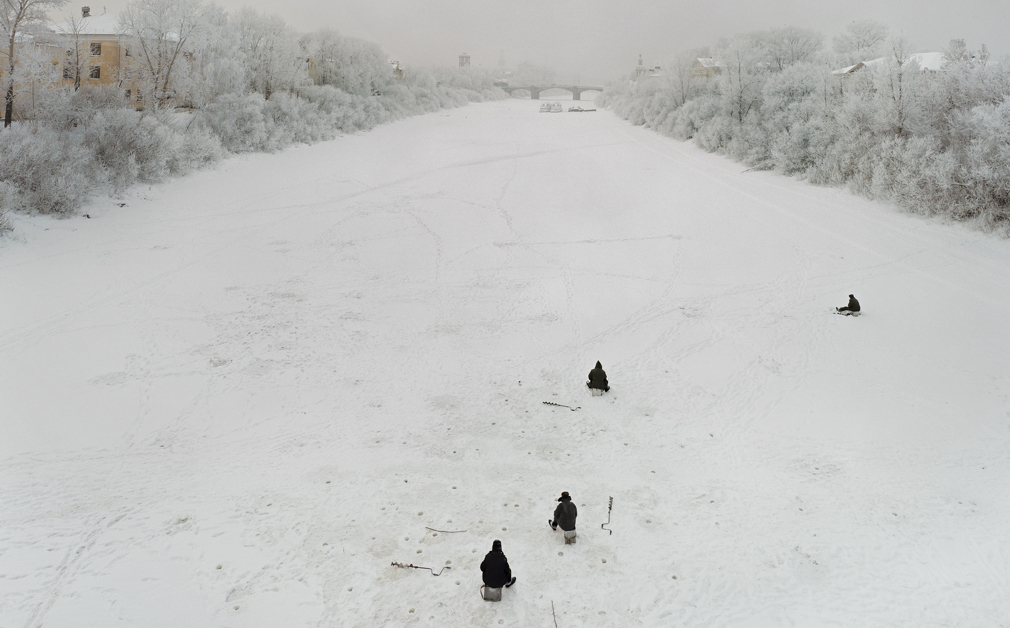Andrew Moore

Andrew Moore
< 2 Years In Between >
From the WFU Student Union Collection of Contemporary Art
AUG 31 – OCT 18, 2015
The Wake Forest University Student Union Collection of Contemporary Art was formed in 1962 and first purchased works on a student-led group trip to New York in 1963. Two Years In Between arose from a desire to keep the “Art Buying Trip” on the front burner between quadrennial purchasing excursions by focusing on one of the artists whose work was added to the Student Union Collection in 2013. The project was framed from the outset as a chance for students to be involved with the selection, interpretation and installation of Mr. Moore’s photographs. Art History professor John Curley and gallery director Paul Bright chose four student-curators – Brittany Forniotis, Reese Guida, Julia Taylor, Casey Feffer – in a competitive process and worked with them to realize this project; their essays are part of the exhibition.
Andrew Moore is a photographer perhaps most known for his series of Detroit at its crumbling nadir. He began taking photographs at an early age, and later studied with the influential photographer Emmet Gowin at Princeton.
In 2008, Moore went with French photographers and urban adventurists Yves Marchand and Romain Meffre to photograph the abandoned industrial and urban sites of the “Motor City.” Moore’s 2010 Detroit Disassembled was both the exhibition and the book that resulted from this and subsequent solo trips to Detroit. Even in the years preceding Detroit, Moore had been shooting overlooked places of a modern world become decidedly post; sites in Cuba, Bosnia, Russia, Ukraine among them. Some of these have resurfaced in the news, others have faded even further from our collective consciousness. The images in the Hanes Gallery exhibition are selections from these series’. Included is the Detroit photograph purchased for the Student Union Collection, Cass Tech Courtyard, (2009), and one, School District 123, from a new series, Dirt Meridian, also featured in a forthcoming book of the same name.
Andrew Moore’s approach to photography combines attentive composition, documentary narrative, and a sensitivity to human presence. His work might be seen as part of the terminus of a century-long arc of an “urban sublime” in photography, a “downtown” parallel to the majestic images of photographers like Ansel Adams (who were themselves descendants of the 19th century “luminist” painters who created large, cinematic landscapes of overwhelming American wildernesses ). What was once the purview of modernist photographers who initially documented the grandeur, energy and the new kind of beauty of burgeoning prewar American cities has now become an approach to recording the eroding post-industrial urban environment, an outlook that has been likened by some to the artists of the 18th and 19th centuries who reverently visited and depicted the ruins of the classical world. Moore has said, “I have a perpetual fascination with certain kinds of decayed spaces that have been reappropriated or reused or where the evidence of people struggling to keep their dignity lingers, places that have been abandoned but retain the ghosts of what they were,” And in fact the ancient ruins of Rome in the 1700s were partially recycled and repurposed, its inhabitants managing an existence in what had once been an imperial capital, not unlike parts of the Detroit of today. More frequently than they completely die or disappear, places change and metamorphose.
Like his 20th century predecessors who, particularly during the Depression and WWII, focused increasingly on the interaction of people with their places and their conflicts, Moore seems interested in a variant “sublime;” that of the human condition. One of the messages of Andrew Moore’s photography seems to be that, after their corruption, man and the environment are forced by changed circumstances to renegotiate. His photographs show us what form those relationships subsequently take.
Andrew Moore received a Guggenheim Fellowship in 2014. His photographs are included in many public and private collections, and his work has been shown at the Joslyn Art Museum (Omaha), the National Gallery of Art, Hood Museum of ART (Dartmouth), the Queens Museum, Philadelphia Museum of Art, the Whitney Museum of Art, George Eastman House (Rochester), Akron Art Museum, among other museums and galleries.
Additional funding provided by the Wake Forest Humanities Institute and the Office of the Provost of Wake Forest Universtiy.
Curators
Student curators: Brittany Forniotis, Casey Feffer, Reece Guida, Julia Taylor; Prof John Curley, Paul Bright
Reception
Tuesday, October 13th, 5:30 PM, Hanes Art Gallery
Related Programs
Reception, Talk, & Book Signing for Dirt Meridian
October 13, 2015 5:30 PM

